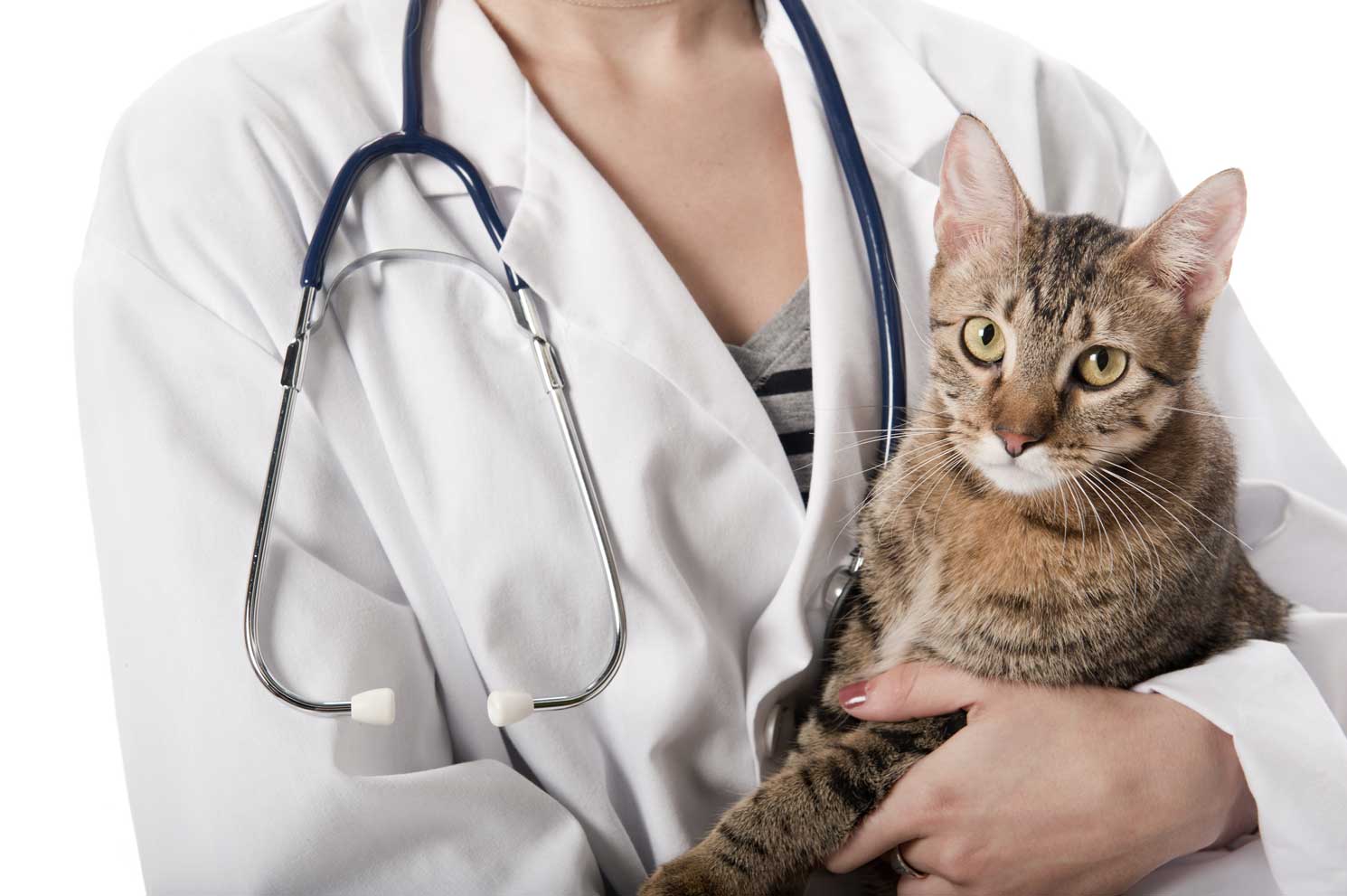Calming Your Cat’s Fear of the Vet
September 1st, 2018

Taking your cat to the vet may not be your favorite activity, given that you’ll have to figure out how to get your furry friend into the carrier, then deal with the car ride with hysterical meowing, followed by the ordeal of the visit itself! It’s no wonder that, despite being the most popular pets in America, cats are more likely to miss out on their wellness exams than dogs. The good news is that you can help reduce your kitty’s fear and anxiety, leaving you and your pet with a calmer and more positive experience. And by choosing a cat-only veterinary clinic, you have eliminated a primary fear factor for most cats: dogs.
Get Your Kitty Comfortable with the Carrier
Once your cat sees the dreaded carrier, alarm bells will ring. Your furry friend likely associates it with fearful experiences of noisy journeys and the anxiety of being away from familiar surroundings. To reduce stress, place comfy bedding and a favorite toy in the carrier and keep it out at home for several days before the vet visit. Better yet, leave it out permanently. This will allow your kitty to explore, sleep, and play.
If your cat enjoys treats, place some in the carrier. You may want to spray it with a feline pheromone, such as Feliway, which will have a calming effect on your furry friend. Covering the carrier with a towel will reduce external stimuli and will help you cat feel safe. Taking the time to acclimate your kitty with the carrier will alleviate a lot of stress and anxiety.
Play Calming Music in Your Car
Music can go a long way in calming your feline friend’s anxiety. Classical music or a pet-specific calming CD can help relax your kitty.
Take Your Cat on Social Visits to the Vet’s Office
It’s always helpful to take your cat for quick social visits to your vet’s office or for rides in your car from a very young age. Make those visits focused on socializing and petting. Your cat will learn to associate the vet’s office with pleasant experiences, rather than the stress of needles, weight checks, and the dreaded temperature taking.
Limit Time Spent in the Waiting Room
The timing of your appointments is important. Early morning visits will ensure your vet is not running behind, which will minimize your wait time. If the wait time is long and the weather permits, consider staying in the car with your kitty until the vet is ready to see you. At our clinic, when an exam room is available, we offer to let you wait in the room with your cat – that way, you can let your cat out of the carrier and they can acclimate to their surroundings.
Take a Treat Along
After the vet exam, it’s always a good idea to offer your cat a favorite treat. This will help to establish a positive association. A lot of petting and love will also be helpful.
Need Help Keeping Your Kitty Calm?
If you continue having trouble keeping your cat calm during vet visits, talk to our friendly staff at All About Cats Veterinary Hospital about possible pre-visit medication options you can administer at home. Our goal is to ensure your cat is calm and relaxed while receiving any needed care. We love our furry patients and have their best interest at heart because after all, we are all about cats!
Recent Posts
-
Summer Safety Tips for Cat Owners
July 11th, 2024
-
The ABCs of Cat Vaccinations – What Every Cat Owner Should Know
June 5th, 2024
-
Preparing for Travel With or Without Your Feline Friend
May 3rd, 2024
-
How to Feed Cats in a Multiple-Cat Household
April 8th, 2024
-
8 Tips to Get Your Cat in a Carrier
March 5th, 2024
-
Help, My Cat’s Breath Smells!
February 5th, 2024
-
A Quick Guide to Coping with Cat Emergencies
January 8th, 2024
-
Traveling for the Holidays? 6 Things to Do Before Leaving Your Cat
December 14th, 2023
-
What Is Catnip and Is It Safe for Your Cat?
November 2nd, 2023
-
5 Tips for New Cat Owners
October 5th, 2023
-
How Often Should My Cat Have a Health Check?
September 7th, 2023
-
Cat Hairballs – What Do I Need to Know?
August 4th, 2023
-
How to Play with Your Cat: Fun Cat Activities
July 4th, 2023
-
What to Know About Your Cat’s Surgery
June 10th, 2023
-
Licensed Veterinary Technician or Technician Assistant Wanted (Full time or Part time)
May 15th, 2023
-
Why, Oh Why, Does My Cat Hate Water?
May 9th, 2023
-
What’s Wrong with My Cat? Benefits of Whole-Body Radiology
April 5th, 2023
-
Should I Feed My Cat a Grain-Free Diet?
March 6th, 2023
-
Smelly Cat, Smelly Cat – Causes of Feline Odors
February 22nd, 2023
-
5 Ways to Reduce Cat Shedding
January 3rd, 2023
-
Your Cat’s Holiday Stress – How to Help
December 6th, 2022
-
Pet Cancer Awareness Month: Warning Signs to Look Out For
November 2nd, 2022
-
10 Halloween Safety Tips for Cat Owners
October 3rd, 2022
-
Why Is My Cat So Active at Night?
September 7th, 2022
-
Should I Really Microchip My Cat?
August 9th, 2022
-
Ways to Keep Your Cat Safe and Cool This Summer
July 1st, 2022
-
10 Fascinating Facts About Persian Cats
June 1st, 2022
-
How to Correctly Transition Cat Foods
May 6th, 2022
-
What Your Cat’s Tail Is Secretly Trying to Tell You
April 5th, 2022
-
6 Common Household Items That Are Poisonous to Cats
March 1st, 2022
-
How Do I Know if My Cat Needs Dental Surgery?
February 16th, 2022
-
How to Safely Introduce Your Cat to Your New Baby
January 11th, 2022
-
Giving a Cat as a Christmas Gift: How to Do It Responsibly
December 6th, 2021
-
5 Thanksgiving Foods That Are Toxic to Cats
November 5th, 2021
-
Is My Kitty Depressed? Signs to Look For in a Sad Cat
October 7th, 2021
-
Training Tips for New Kitten Owners
September 7th, 2021
-
Taking Your Cat to the Vet: How to Make It a Stress-Free Experience
August 6th, 2021
-
The Origins and History of the Tabby Cat
July 13th, 2021
-
We are hiring a Veterinary Technician!
July 12th, 2021
-
Kitty Claw Control: How and When to Cut Your Cat’s Nails
June 7th, 2021














